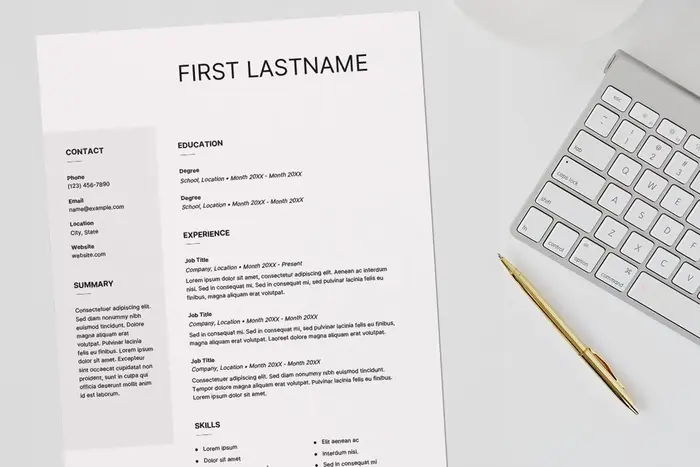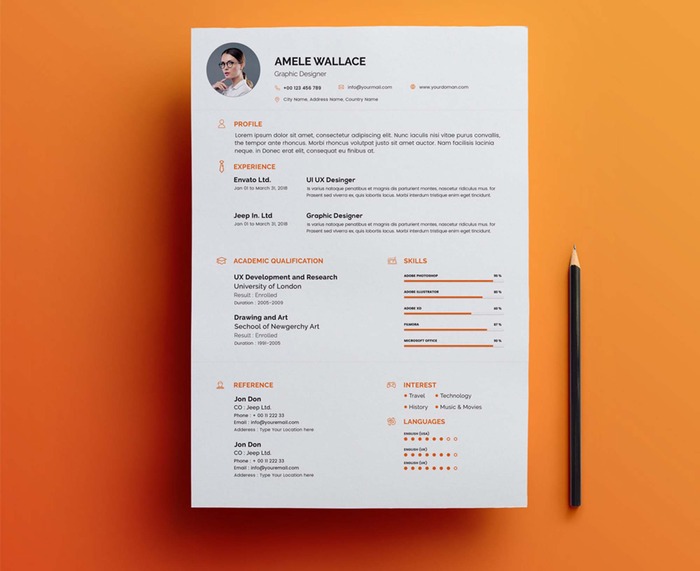Ensure that your name and contact information appear prominently at the top of your resume. This is what hiring managers see first when they scan your resume.
Use strong action words to describe your work experience and accomplishments. Avoid trite descriptions like “advanced” and “innovated.” Short gaps in your employment are okay but don’t hide them. You can go net surfing regarding resume templates for jobs, and pick the one that meets your requirements.
-
Contents hide
Format
Most people are familiar with the reverse chronological format, which begins with your most recent position at the top of the section. However, this isn’t the only way to arrange your work experience. The functional resume is an alternative, which emphasizes your skills and experiences without showing the dates of when you worked in each role. It’s a good option for job seekers who are changing careers or those with gaps in their work history.
Keep your work experience sections short and include only the most relevant information. Also, avoid using personal details such as birth date or marital status in your resume. Instead, use your LinkedIn profile to upload a professional photo and make sure that you have your citizenship listed. Also, only list the languages you speak that are related to your career field. Limit the number of pages to one or two and use a clean font such as Arial or Verdana.
-
Layout
A professional-looking resume is essential to getting your foot in the door at a new company. This means establishing the right formatting, including an effective headline that draws attention to your skills and experience. You should also include your email address, phone number, and LinkedIn profile if you have one. Make sure that these details are visible and are in a bolder or larger font than the rest of the resume.
When it comes to listing work experience, begin with the most recent position first and list each job in reverse chronological order. Be sure to include the title of each position, the name of the company, and the location. You should then highlight key responsibilities and accomplishments using bullet points. Try to quantify these as much as possible by incorporating hard numbers, such as percentage increases in revenue or productivity. Also, consider adding an “Accomplishments” section to showcase your soft skills. This is especially important if you have gaps in your employment history.
-
Content
Unlike traditional resumes that simply contain a laundry list of job responsibilities and successes, today’s resume must convey what truly motivates you as a professional. This can be done by highlighting your soft skills and focusing on results-oriented accomplishments.
It is also important to customize your resume for each job application. This can be time-consuming, but it will give you a definite advantage over your competition.
You should also consider using bold and italics to emphasize certain elements of your resume. However, don’t overdo this, as it can be distracting and make your resume look cluttered.
In the work experience section, focus on your most relevant jobs and include the title, company, start and end date, as well as a brief description of your duties and notable accomplishments. Use quantifiable metrics whenever possible, such as demonstrating how you saved money or improved efficiency. Be sure to include any relevant education.
-
Keywords
The most important sections of a resume include contact information, a summary or profile, experience, and education. Some people also like to list online social media sites, but this should be limited to those used for professional purposes and only if they have a significant following.
The bullet points under each job should focus on how you added value to the company and what you achieved because of your work. They should use strong action verbs and provide contextual details about the jobs you worked in such as how many employees you managed, what your responsibilities were and how you helped them perform better.
You should also add a section that describes your unique qualities and what makes you stand out. This can be as simple as listing your top skills and explaining how they are relevant to the job you want. This section will help an employer determine if you are a good match before they even read your resume.


